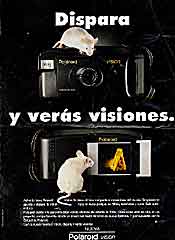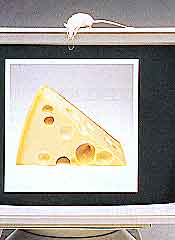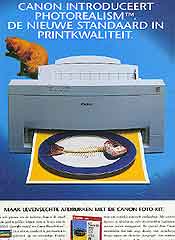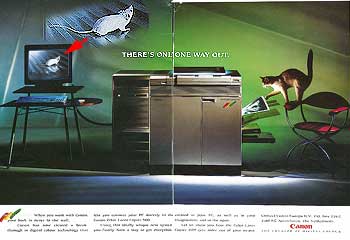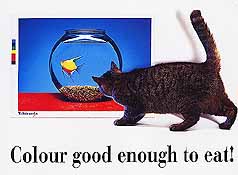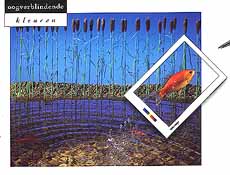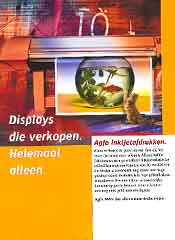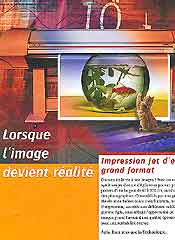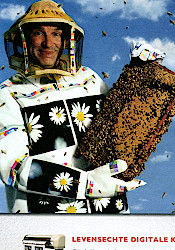Home
/ Animals in advertising / True Colour
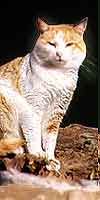
Illustration 5 : True colour
You'll need two players to convince people that
your product is synonym with good sharp colourful images. The procedure
comes rather expensive because one of the actors needs to gobble the other one down : cat eats fish, cat hunts mouse, mouse savours cheese.
When the receiver is a printing professional, the advised recipe is to enhance the advert with a colour calibration target.
